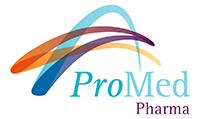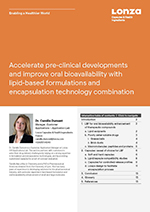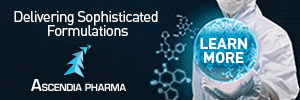Drug Delivery
GLOBAL REPORT – 2020 Global Drug Delivery & Formulation Report: Part 2, Notable Drug Delivery and Formulation Product Approvals of 2020
In part 2 of this 4-part series, PharmaCircle, in collaboration with Drug Development & Delivery, focuses on notable drug delivery and formulation product approvals.
FORMULATION FORUM - Understanding of Amorphous Solid Dispersions & Their Downstream Development
Jim Huang, PhD, discusses how understanding the properties of ASDs and their relationship to downstream product scale up, stability, and in-vivo performance is critical to successfully utilize them for drug delivery of insoluble drugs in early development and commercialization in a timely and cost-effective manner.
INHALATION DELIVERY - Inhaled Drug Development: Optimizing Delivery
Sandy Munro, PhD, Nikki Willis, and Geraldine Venthoye, PhD, believe selecting the delivery device/platform on the basis of patient needs, nature of disease, and opportunities for accelerating the proof-of-concept or early clinical stages by using fast-to-clinic approaches can help to accelerate the project through later-stage development by combining the approach with seamless scalability, designing in manufacturability, and an appropriate manufacturing strategy.
BIOSIMILAR DEVELOPMENT - Guidance on Biosimilar Interchangeability: The Debate Over Drug Delivery Devices
Darren Mansell says as early experience in following this guidance has recently matured, some issues have arisen that may impede best available outcomes for patients, one of which is the question of whether “interchangeability” guidance may stifle innovation (and therefore improved patient experience) in drug delivery devices.
OPEN INNOVATION PLATFORM - Incentivizing Drug Delivery Research Using an Open Sharing Platform
Keith R. Horspool, PhD, Shirlynn Chen, PhD, and Markus Koester, PhD, discuss an open innovation platform to stimulate scientific understanding, and development of potential new technologies, for delivery of compounds with challenging solubility by offering a set of more contemporary poorly soluble drugs free-of-charge for independent research activities.
PRODUCT DEVELOPMENT STRATEGY - ESCP, Estimating Product Performance Part 2 – Choosing a Seesaw
Josef Bossart, PhD, introduces, in a series of short articles, a qualitative model to help understand and visualize the potential of a product with prescribers, patients, and payors. This simple model can help weed out product ideas that may at first glance seem attractive but offer little potential in the real world.
EXECUTIVE INTERVIEW - Celanese: Better Therapeutic Outcomes From Better Drug Delivery
Laura Brand, Vice President of Celanese’s Medical & Pharmaceutical Business, discusses her company’s drug delivery platform and the value it brings to the industry.
FORMULATION FORUM - Considerations in Development & Manufacturing of Complex Injectables for Early Phase Studies
Jim Huang, PhD, explains how a niche CDMO, which has specialized technologies in complex injectable development and adopts GMP practice with a “laboratory setting,” will have greater flexibility regarding changes, timing, and cost for successful manufacture of complex injectables in early phase development of therapeutic drugs.
MICROFLUIDIC ENCAPSULATION TECHNOLOGY - Achieving Reliable siRNA Drug Delivery for Inflammatory Diseases & Tumor Targeting by Nanoencapsulation
Olivia Merkel, PhD, and Christoph Zimmermann, PhD student, discuss the benefits of microfluidic encapsulation technology for gene silencing applications in cancer immunology and inflammatory diseases, where siRNA can potentially be used to downregulate genes associated with these pathologies.
ORAL MUCOSAL IMMUNOTHERAPY - Oral Mucosal Delivery of Allergenic Proteins for Inducing Tolerance in Food Allergic Individuals
William R. Reisacher, MD, highlights some of the differences between food allergy immunotherapy via the oral mucosal route versus exposure through the stomach and intestines.
EXCLUSIVE ONLINE CONTENT

Asahi Kasei Bioprocess & Axolabs Announce Strategic Partnership to Accelerate Oligonucleotide Therapeutics Development
Asahi Kasei Bioprocess (AKB), part of the Asahi Kasei Group, and Axolabs have recently announced a strategic partnership in the burgeoning field of oligonucleotide….
Biora Therapeutics Announces New Patent Covering its BioJet Liquid Jet Delivery Technology
Claims cover key jet parameters for liquid jet delivery of a drug to the gastrointestinal tract….

ProMed Pharma Acquires SpineThera Manufacturing Capabilities & Option to License Intellectual Property
ProMed Pharma LLC and SpineThera, Inc. recently announced ProMed Pharma has acquired SpineThera’s cGMP manufacturing operational assets. ProMed Pharma also obtained an option to….

Bespak Confirms Inhaled & Nasal Drug Delivery Business Separation From Recipharm
Spin-out unites three sites to create a leading global CDMO as further significant investments announced at Holmes Chapel site….

Teva & Abingworth Enter Strategic Development Funding Agreement
Collaboration combines Teva’s expertise in respiratory technology development and Launch Therapeutics’ innovative late-stage drug development model to progress Teva’s Dual-Action Asthma Rescue Inhaler (TEV-‘248) program….
MARKET NEWS & TRENDS
WEBINARS
WEBINAR - 2024 Trends in Topical Drug Delivery: Insights & Innovation
This webinar will discuss some of the key trends from these leaders in the topical market on both a global and regional level, including the increased importance of sensory properties and the rise in non-conventional product formats, among others…..

WEBINAR - Nanoparticle Suspensions: History, Applications & CMC Aspects
This webinar describes the history, CMC aspects, and potential applications of nanoparticle suspensions (NSs). This drug delivery technology should be considered for crystalline, sparingly water-soluble APIs. The presentation highlights….

WEBINAR - Beyond the Lab: Unleashing the Potential of In Silico Modeling in Drug Product Formulation
In this webinar you will learn how digital chemistry tools facilitate rapid screening of formulation parameters, aiding in the identification of optimal drug delivery systems, excipient selection, and dosage forms….

ON-DEMAND WEBINAR – Solve Common Design Challenges in Inhalation Devices With Porous Polymers
The effectiveness of inhalation devices relies on their ability to deliver the pharmaceutical directly to the targeted part of the body with precision and calculated dosing. Since these devices….
ON-DEMAND WEBINAR - Exploring Pectin & the Advancement of Delayed Release Technology
In this webinar, experts will provide an overview of why the properties and structure of pectin are well suited for site-specific delivery to the colon. In addition, experts will also provide insights into how softgel capsules, formed by the combination of both pectin and gelatin, are used in OptiGel® DR, a new delayed release delivery technology for pharmaceutical applications.
WHITE PAPERS

WHITEPAPER - Manufacturing of 10-mg Loratadine Self-Emulsifying Drug Delivery System (SEDDS) Tablets by Direct Compression With ABISORB-DC & ABISOL Emulsion Preconcentrate Kit
10-mg loratadine SEDDS were successfully manufactured with ABISORB-DC(TM) and ABISOL(TM) 2 by direct compression on a rotary tablet press, employing standard pharmaceutical manufacturing equipment…..

WHITEPAPER - Copolymer Microstructures: Connecting Monomer Sequence Distribution With Biomedical End-Application Performance
To gain insights into advanced copolymer characterization techniques and their impact on drug release in biomedical products, we invite you to explore the latest Corbion white paper…..

WHITEPAPER - The Viscosity Reduction Platform: Viscosity-Reducing Excipients for Protein Formulation
This white paper evaluates the viscosity-reducing capacities of excipients and excipient combinations…..

WHITEPAPER - Accelerate Preclinical Developments & Improve Oral Bioavailability With Lipid-Based Formulation & Encapsulation Technology Combination
This paper covers the benefits of the LBF and capsules combination in dosage form developments, an efficient technology platform to bring efficient and differentiated products to the market.

WHITEPAPER - Effect of Excipient Choices on Topical Formulations & Manufacturing Processes
In this whitepaper, we review the effect of excipient choice on the process of manufacturing topical products. The effect of the following excipient types will be discussed: surface active agents, preservatives, polymer choice and….
What are Drug Delivery Systems?
Drug delivery systems are engineered technologies for the targeted delivery and/or controlled release of therapeutic agents. The practice of drug delivery has changed significantly in the past few decades and even greater changes are anticipated in the near future. Drug delivery includes but is not limited to oral delivery, gene/cell delivery, topical/transdermal delivery, inhalation deliver, parenteral delivery, respiratory delivery, capsules, particle design technology, buccal delivery, etc.
The Evolution of Drug Delivery Systems
Drug delivery systems have greatly evolved over the past 6 decades. In the past 12 years specifically, there have been huge advancements in drug delivery technology. For instance, advanced medication delivery systems, such as transdermal patches, are able to deliver a drug more selectively to a specific site, which frequently leads to easier, more accurate, and less dosing overall. Devices such as these can also lead to a drug absorption that is more consistent with the site and mechanism of action. There are other drug delivery systems used in both medical and homecare settings that were developed because of various patient needs and researchers continue to develop new methods.
Drug Delivery System Market Size
The pharmaceutical drug delivery market size is studied on the basis of route of administration, application, and region to provide a detailed assessment of the market. On the basis of route of administration, it is segmented into oral delivery, pulmonary delivery, injectable delivery, nasal delivery, ocular delivery, topical delivery, and others.
The estimated global market size of drug delivery products was $1.4 trillion in 2020. Unfortunately, 40% of marketed drugs and 90% of pipeline drugs (mostly small molecules) are poorly soluble in water, which makes parenteral, topical, and oral delivery difficult or impossible. In relation, poor solubility often leads to low drug efficacy. Add in the fact that many other hurdles exist in the form of drug loading, stability, controlled release, toxicity, and absorption – it’s not hard to understand the difficulties in bringing new drug products to market. Additionally, biopharmaceuticals (proteins, peptides, nucleic acids, etc) and combination drug products possess many of these same problematic obstacles that affect efficacy. These challenges, coupled with the complexity and diversity of new pharmaceuticals, have fueled the development of a novel drug delivery platforms that overcome a great many bioavailability and delivery obstacles. By leveraging these platforms, pharmaceutical and biopharmaceutical companies can improve dosing accuracy, efficacy, and reproducibility in their drug discovery and drug delivery research.
Drug Delivery System Demand
The demand for pharmaceutical products worldwide is only going to increase in the coming years, as old and emerging diseases continue to threaten the well-being of people globally. Drug discovery efforts are expected to intensify, generating a large variety of active compounds with vastly different structures and properties. However, it is well known that despite tremendous output of the drug discovery process, the success rate of a candidate compound becoming an approved drug product is extremely low. The majority of candidate compounds are discarded due to various hurdles in formulation and preclinical testing (such as issues with solubility, stability, manufacturing, storage, and bioavailability) before even entering into clinical studies. Therefore, advances in formulation and drug delivery, especially the development of new and versatile biomaterial platforms as effective excipients, may salvage many “difficult,” otherwise triaged, drug compounds, and significantly enhance their chance of becoming viable products. Furthermore, breakthroughs in biomaterial platform technologies will also facilitate life cycle management of existing APIs through reformulation, repurposing of existing APIs for new indications, and development of combination products consisting of multiple APIs.





